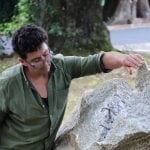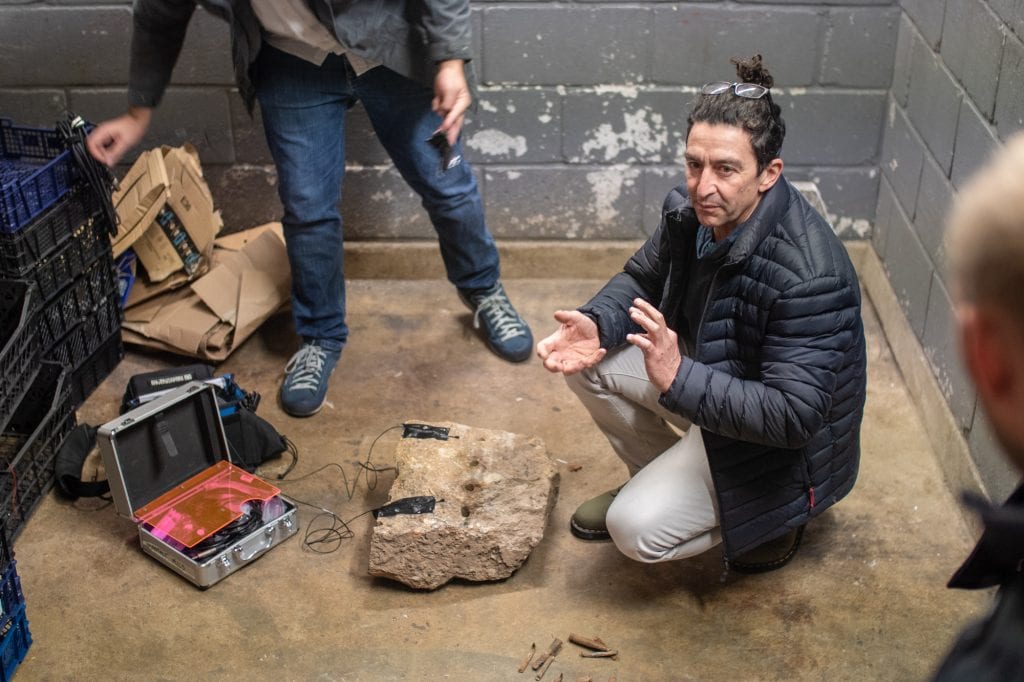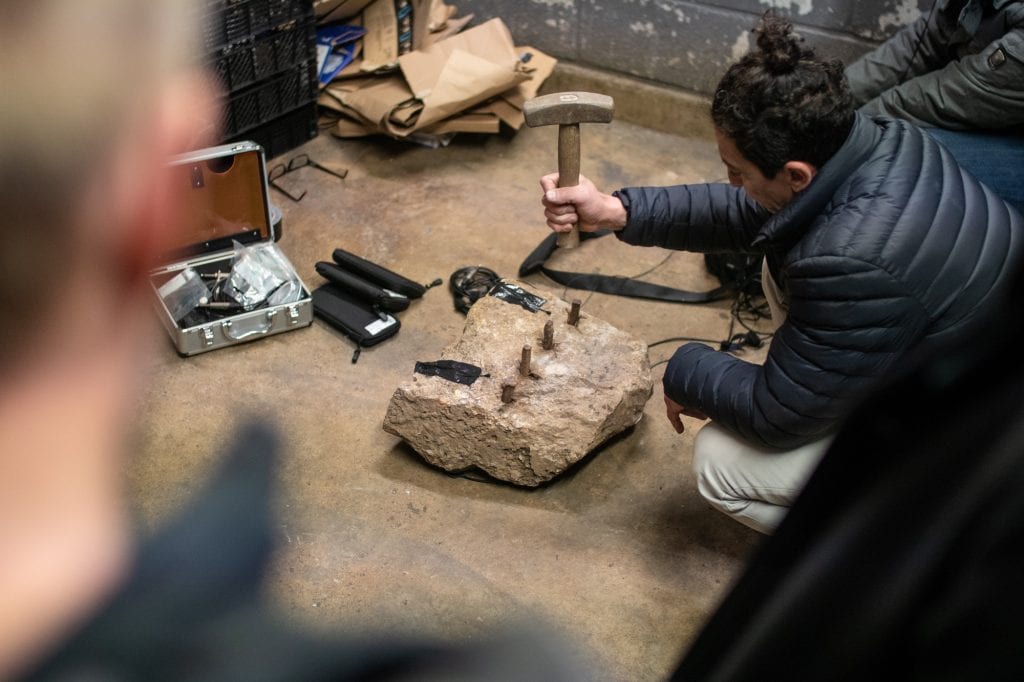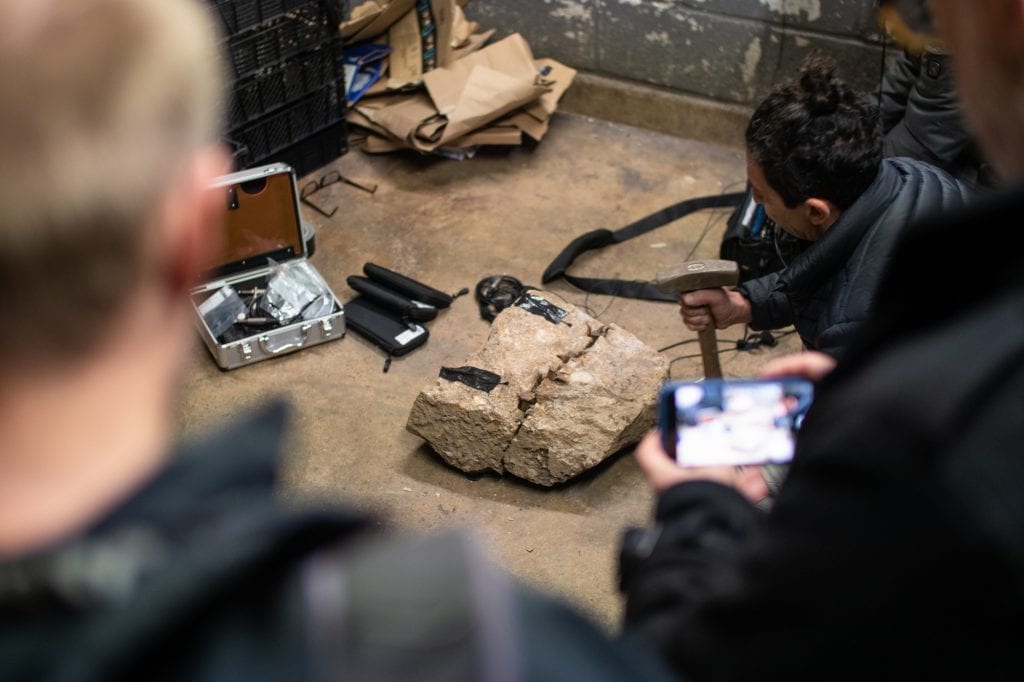The breath of the geologic… in a bin store
By David Paton
Throughout the ten years I have spent working with Cornish granite, I have split blocks in many places; but perhaps the most unusual is in a bin store at the back of the Watershed building in Bristol, during the second SWCTN gathering in November 2018. Added to this was the excitement of collaborating with Luke Reed – an audio and music technologist and SWCTN fellow – to record the sound of the granite splitting. In the diminishing light of a winter’s evening, a group of us huddled into this little brick and concrete room to witness the poetic flux of the geologic.
Splitting a granite block is performed through the drilling of a row of holes, into which are placed ‘plugs and feathers’. The plugs (forged steel wedges) are hammered in between the feathers (two oppositely tapered wedges). The hammering-in of the wedges gradually increases the pressure until a crack is emplaced, working its way between the holes and down through the crystalline matrix of the granite block, until it falls in two. This fundamental method for dimensionally reducing the granitic mass has been a feature of the industrialised landscape of Cornwall for a few hundred years. For me ‘stitch-splitting’ – as it is known – is a coalescing of magick and heavy industry.
There is this moment, then, where the freshly split faces of granite take their first sharp intake of air, followed by a momentary exhalation of deep time… a lens into the very liveliness of all matter.
Luke did indeed capture that instance where the granite split – the briefest of sonic expressions – filling the bin store with a material tension that began its trajectory three hundred million years ago.




